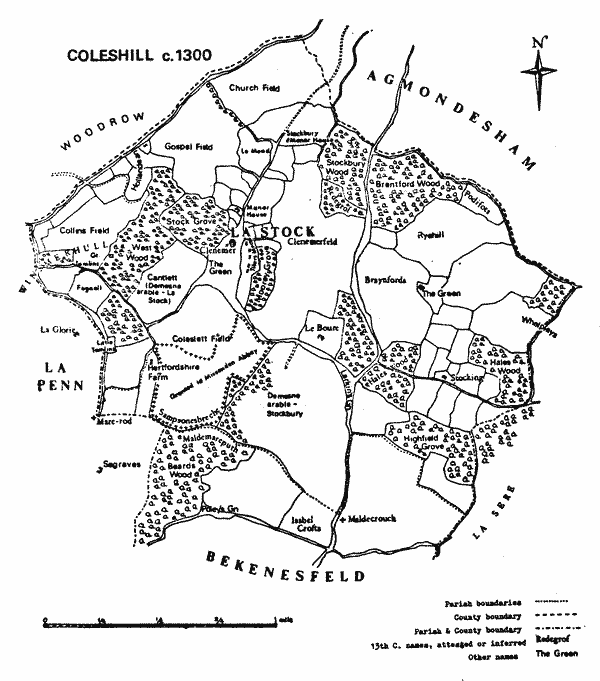John Chenevix Trench was a well known figure in Coleshill having lived here for 50 years. He was a well-respected local historian and antiquarian who pursued painstaking academic research into ancient archives, many of these in Latin, and has published many scholarly works, including his Short History of Coleshill from which the following extract is taken.
A Summary History of the Parish of Coleshill
In the last quarter of the sixth century, two groups of English settlers moved up into the Chilterns. One of them came from the Thames Valley; they were Middle Saxons. The other group, composed of Angles, had conquered a Roman British community in the Vale of Aylesbury. Advancing into the hills from both sides, Angle and Saxon met on what became the boundary of the Chiltern Hundreds. The Chiltern Hundreds were the Chiltern territory of the Kingdom of Middlesex. The English did not displace the British; they needed them to work the land.
The land was all forest, valuable not just for timber, but for grazing. Some Angles near Tring established grazing rights in what is now Coleshill. They had a priceless asset, a reliable water supply: our village pond. They called the place 'Stock', meaning a cattle farm, and it bore this name throughout the middle ages.
Soon after the year 900 south-west Hertfordshire was conquered by Danes. The Danish Lord of Tring rewarded his followers with the empty forest grazing grounds of his new property. So the first farmers came to Coleshill, and they were Danes. The process was perfectly peaceful; there was no bloody battle on Gore Hill. Gore means a triangular piece of land.
The settlers wanted to have disputes settled according to Danish law. The court where such cases were heard was the Hundred Court. So Coleshill was attached to the nearest Danish Hundred: Dacorum in Herts,
At the time of Domesday Book (1086) there were eight farmers in Coleshill. But the area under cultivation was expanding, and by around 1200 the plough had reached the southern boundary of the township.
Meanwhile Brentford Grange was the centre of a hamlet of three households, probably with 30 or 40 acres each (12 - 16 ha). The name is from Old English Bra(y)gen, the brain-case or top of the head, applied to a hill, and firth, meaning an extensive wood.
About 1155 Coleshill and Amersham were given to William de Mandeville, Earl of Essex. The Earl gave Coleshill to sub-tenants and they in turn had sub-sub-tenants: a local family, the de la Stocks, held most of the land west of what became the A355, and another, the de Braynfords, what lay to the east.
The de la Stocks divided their part of the manor about 1220. By 1300 its land had become part of the manor of Amersham.
It's western half was acquired about 1450, by the Brudenells. They held it until the late 16th century, when it passed by marriage to Sir Basil Brooke. In the early 1500s it was let to Francis Waller of Beaconsfield. Francis was succeeded by his brother Edmund, and he by his son Robert, father of Edmund the poet (b. 1607). In 1616 Brooke sold the place to a lawyer called George Coleshill, who sold off the land and built three new farmhouses, which still exist. He wanted to live in the village that bore his name, but not in the manor house, which was too old-fashioned for him. The eastern manor house was also old-fashioned, but its owners were keen to sell, and Coleshill took a long lease and rebuilt it. His house is the Bowers Farm we see today. What was left of the manor passed to a succession of local tradesmen.
A full copy of ‘A Short History of Coleshill’ by local historian John Chenevix-Trench is available price £2.00 - proceeds to The All Saints'’ Harvest Charity

